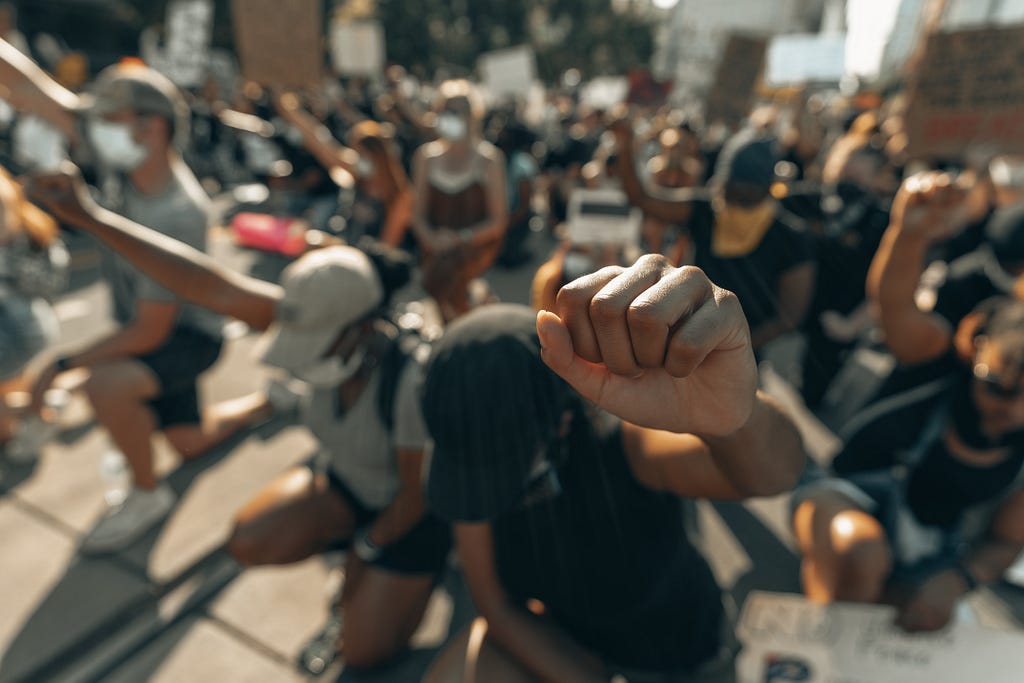Where Do We Go From Here? Reckoning, Reparations and Rebirth

In Martin Luther King Jr.’s 1967 book, Where Do We Go from Here: Chaos or Community?, he challenges Americans to grapple with basic questions about our national character. More than 50 years later, the question remains: Where do we go from here?
In recent weeks we’ve seen moments of outrage, grief and confusion. And yet, in times like this, I carry the same relentless optimism of my immigrant parents and generations before me. As we feel this pain, I believe this is also the beginning of a social and economic transformation. And as a passionate brand strategist, I believe businesses can be powerful vehicles of change — they hold the stories and values that can shape society and shift culture toward progress.
For years, working with businesses on purpose-led communications, many issues have been raised consistently: climate change, economic empowerment, gender equality, and even mental health. Then there’s the issue that’s uncomfortable and almost always avoided: racism.
That is, until the world watched George Floyd’s killing on video, catalyzing a racial justice movement and, for many, an awakening to the reality of race in America.
While businesses like Ben & Jerry’s have a long history of supporting Black Lives Matter and continue to lead the way, many household names are just joining the cause. Companies like Sony, Coca-Cola, Apple, Lululemon or Chick-fil-A are starting to pledge their support, signaling that as a culture, we might finally be at a tipping point. Difficult conversations about race are now expected to take place in our living rooms and our boardrooms. And with a lack of unifying leadership in our nation’s highest offices, this moment demonstrates that people are looking to businesses to model the behavior that governments and institutions are failing to provide.

Not long after the wave of business responses came the parodies, poking at the empty gestures and the shallow bravery of “standing against injustice” in words but not deeds. This inherent skepticism points us to an important truth: This work cannot end with a superficial campaign or social media post that risks causing more harm to Black communities and deepening the loss of faith and trust that people have with companies.
“History is calling the future from the streets of protest. What choice will we make? What world will we create? What will we be? There are only two choices: racist or anti-racist.” — Ibram X.Kendi
How Might Brands Approach the Work of Anti-Racism?
My experience working in microfinance in South Africa — a country with its own history of brutality and beauty, trauma and triumphs, truth and reconciliation — taught me the principles of restorative justice. In these principles are lessons for how brands might work through this moment.
Reckoning
What if we hold a mirror to ourselves and recognize where and how our own work, brands and businesses have perpetuated structural racism?
“We need to reckon with our history of racial injustice. I think everything we are seeing is a symptom of a larger disease.” — Bryan Stevenson
To heal, we must first acknowledge the harm. Examining company history, and more importantly the legacy of that history, is a critical first step to meaningful reconciliation. That legacy often becomes most visible when we examine the makeup of the leadership team.
“The best place to start is to find what are the active campaigns against you? Who are the activist organizations making demands? Resolve those actions.” — Rashad Robinson
Reparations
What if we seek to right the wrongs of structural racism by investing in Black communities and people?
“Something more than moral pressure calls America to reparations. We cannot escape our history. All of our solutions to the great problems of health care, education, housing, and economic inequality are troubled by what must go unspoken.” — Ta-Nehisi Coates
It could be a financial company providing Black families with new paths to home ownership as reparations for generations of red-lining; a technology company providing education funds and student-loan debt repayment as reparations for declining investments in education; a beauty company investing in emerging Black-owned beauty brands as reparations for a lack of access to venture funding; an apparel company promoting Black designers and board members as reparations for decades of profiting off of their culture and people.
These commitments go beyond a CSR platform and represent a fundamental shift in business priorities — disrupting internal systems to heal past wounds and eliminate future harm.
Rebirth
What if we build a new economic system that places value on all human life?
“This old system does not value our humanity. But a new system is being born. This new system serves a 21st century model of leadership whose purpose is to create value for all stakeholders, not just shareholders. And this new system will help us live into our full potential as human beings.” — Jay Coen Gilbert
Brands have the power to change the rules and restructure systems toward equity and mutual respect. The Certified B Corporation movement is one of many models that proves we can build entities that are not just socially responsible, but socially accountable.
In practice, the path to reconciliation is an ongoing process that may never be finished. But in a moment of unprecedented, compounding crises, we have a choice. We can lean on the same systems and institutions that got us here. Or we can bring relentless optimism to imagine beyond the limits of today and birth a new future.
So, where do we go from here?
This article was written by Amanda Yogendran, a strategy director at Certified B Corporation BBMG, which published a longer version.
B the Change gathers and shares the voices from within the movement of people using business as a force for good and the community of Certified B Corporations. The opinions expressed do not necessarily reflect those of the nonprofit B Lab.

How Restorative Justice Can Guide Businesses in the Work Against Systemic Racism was originally published in B The Change on Medium, where people are continuing the conversation by highlighting and responding to this story.